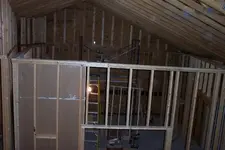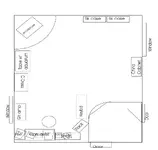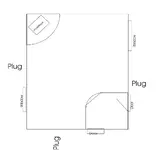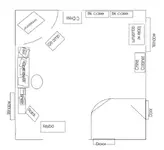Chris Tondreau
Member
Okay, so I've moved my studio into a nice big room in my house that used to be the family room. (he-he.... he shoots, he scores!!! )
)
I'm just curious, in general (not specific to MY room - at least not yet) what the effect of a sloped ceiling is. The room has a ceiling that slopes up from either side, and results in the center of the room being about a foot and a half higher than the two walls. This "peak" runs the length of the room, rougly drawing a straight line from my monitors, past my listening chair, and towards the back of the room. Unfortunately, the room is not laid out such that my "studio area" can be centered along the "peak." My left-most monitor is almost directly beneath it, and the right monitor is about a foot and a half in from the side wall.
Have I lucked out yet again, or will this be something I'm likely going to have to manage with diffusion, etc. of sorts?
Chris
 )
)I'm just curious, in general (not specific to MY room - at least not yet) what the effect of a sloped ceiling is. The room has a ceiling that slopes up from either side, and results in the center of the room being about a foot and a half higher than the two walls. This "peak" runs the length of the room, rougly drawing a straight line from my monitors, past my listening chair, and towards the back of the room. Unfortunately, the room is not laid out such that my "studio area" can be centered along the "peak." My left-most monitor is almost directly beneath it, and the right monitor is about a foot and a half in from the side wall.
Have I lucked out yet again, or will this be something I'm likely going to have to manage with diffusion, etc. of sorts?
Chris


 )
)


 There are some things there that won't work, but I get the idea, and with a small amount of tinkering, I can make it work.
There are some things there that won't work, but I get the idea, and with a small amount of tinkering, I can make it work. ) that goes along each wall, extending outward pretty much to the end of the bricks. (as shown on the diagram by the semi-circle) It is almost shoulder-high.
) that goes along each wall, extending outward pretty much to the end of the bricks. (as shown on the diagram by the semi-circle) It is almost shoulder-high.